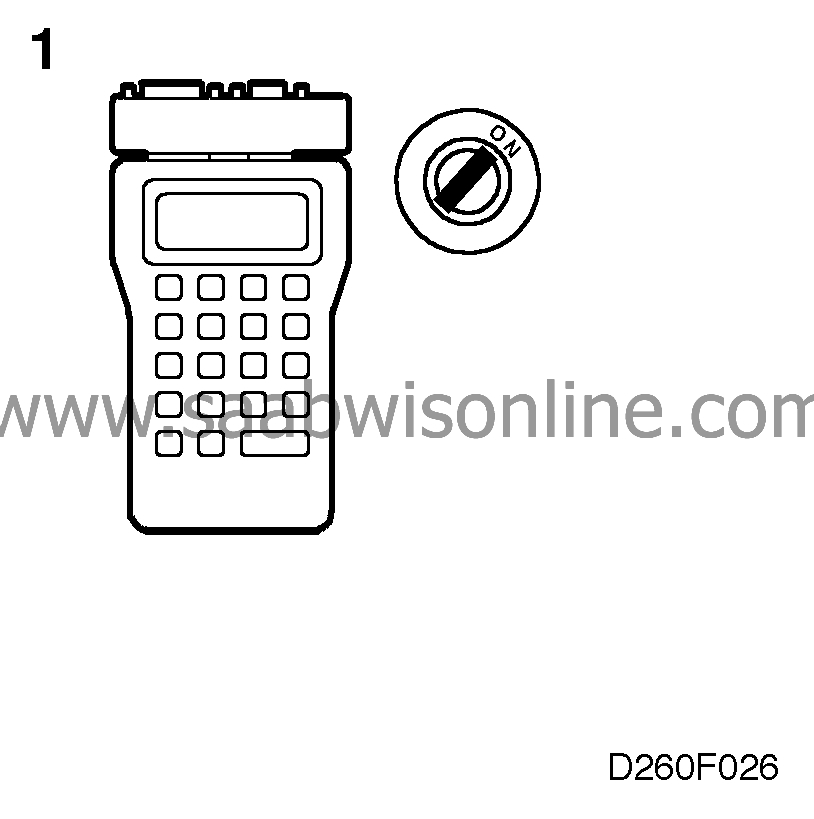Checking the functioning of the cooling system
|
|
Checking the functioning of the cooling system
|
Cooling fan
|
1.
|
Connect the diagnostics instrument and select "READ FAULT CODES" in the menu. If diagnostic trouble codes (fault codes) are present, consult the table of diagnostic trouble codes.
|
|
2.
|
To start the radiator fan, select "ACTIVATE RELAY" on the menu followed by "RADIATOR FAN, LOW".

If the car is equipped with a 2-speed radiator fan, select "ACTIVATE RELAY" followed by "RADIATOR FAN, LOW".
If the radiator fan does not work, check that 12 V is present on terminal 30 of the relay holder for each radiator fan relay.
|
|
3.
|
Strap between connections 30 and 87 in the relay holder.
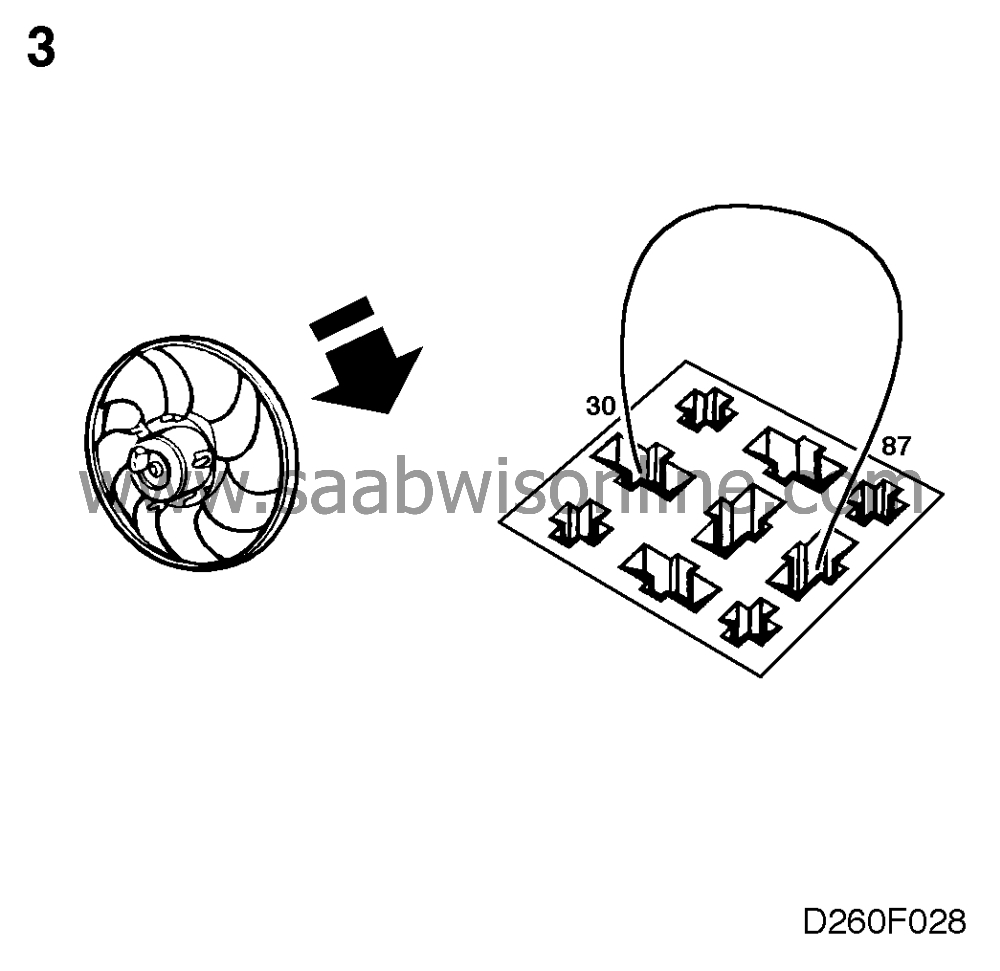
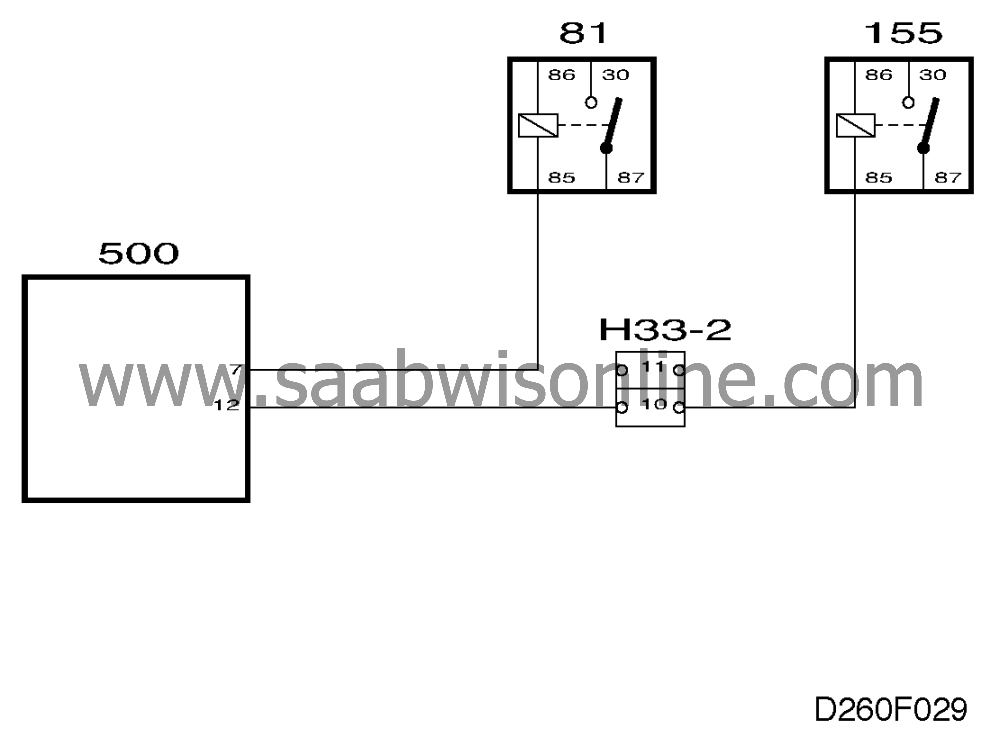
If the radiator fan works, the fault is in the relay. Fit a new relay.
If the radiator fan does not work, continue with point 4.
|
|
4.
|
Disconnect the radiator fan's connector and check that there is:
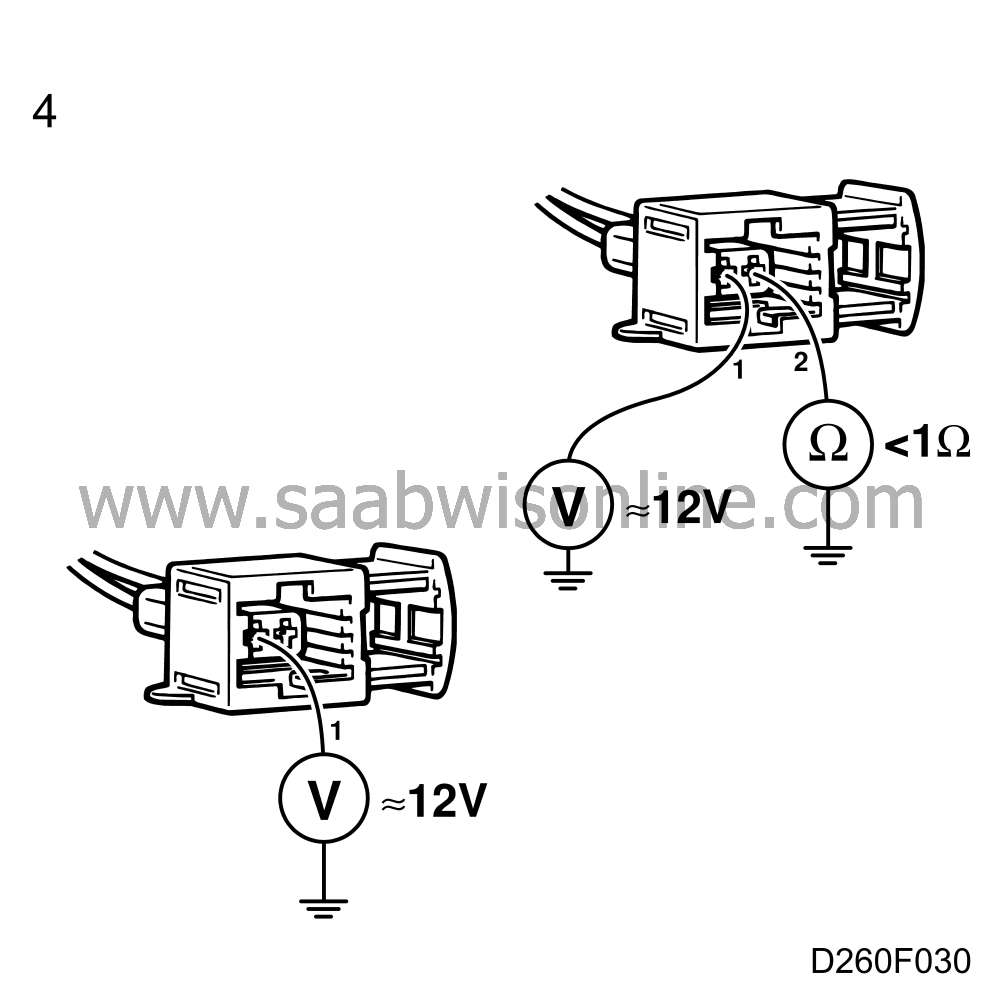
- 12 V across pin 1 and a good grounding point.
a resistance which is less than 1 Ohm between pin 2 and a safe grounding point.
|
|
5.
|
If that is not the case, check the wiring for short circuits/open circuits between terminal 87 of the relay holder and terminal 1 of the radiator fan.

|
|
6.
|
If the fan does not work in spite of these checks, fit a new radiator fan.
|
Pressure switch A C
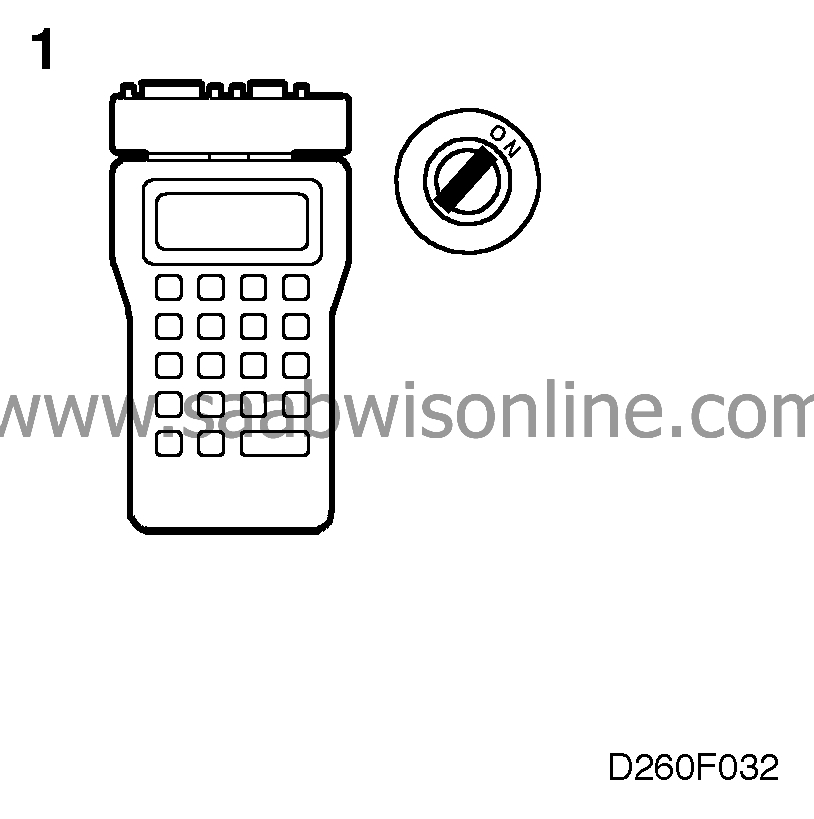
|
1.
|
Connect the diagnostics instrument and select "READ VALUES" first and then "PRESS. SWITCH 1 AC". For certain markets the car is equipped with an extra pressure switch. In such case, select "PRESS. SWITCH 2 AC".
"
OPEN
" - The fan should not be activated
"
CLOSED
" The fan should be activated
|
|
2.
|
If this is not correct, disconnect the pressure switch and clamp between the connector's pins and repeat point 1.
|
|
3.
|
If this does not work, connect a BOB and check the wiring for open circuits/short circuits as follows:

Pressure switch 1
between connection 22 on the ICE and connection 3 on the pressure switch.
between connection 4 on the pressure switch and a safe grounding point.
Pressure switch 2
between connection 69 on the ICE and connection 1 on the pressure switch.
between connection 3 on the pressure switch and a safe grounding point.
|
|
4.
|
If there is no fault in the wiring, replace the pressure switch.
|
The temperature in the cooling system
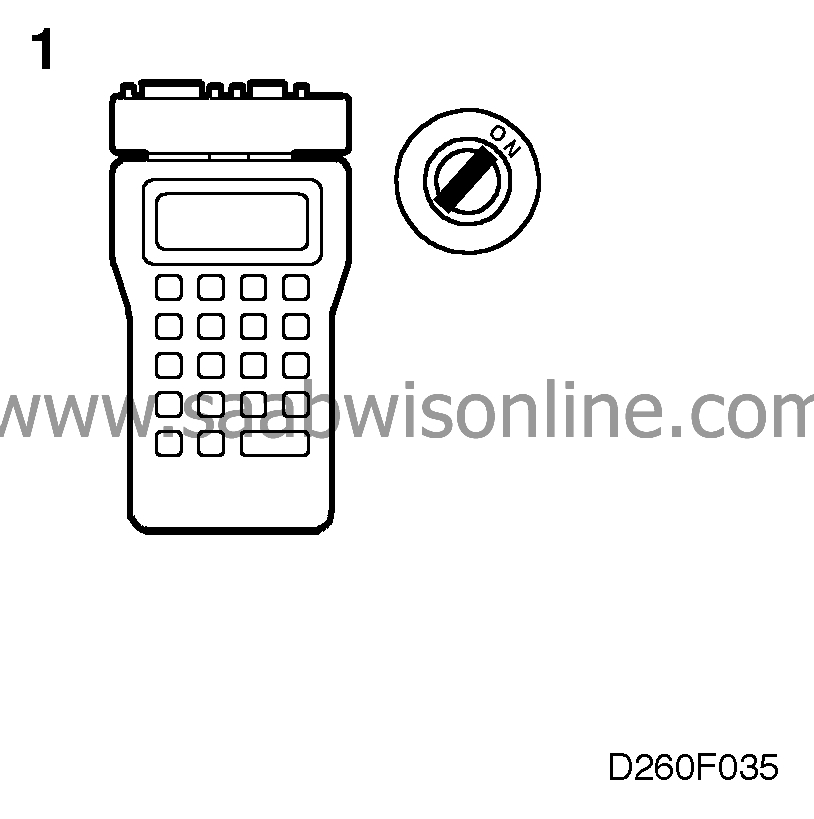
|
1.
|
Connect the diagnostics instrument and select "READ FAULT CODES" in the menu. If diagnostic trouble codes (fault codes) are present, consult the table of diagnostic trouble codes.
|
|
2.
|
Check the temperature gauge in the main instrument unit by first selecting "ACT INSTR. FUNCT" followed by "SIM.COOL.TEMP 2" or "SIM.COOL.TEMP 1". The ICE will now simulate a temperature in the cooling system between -30 and +130°C (-22 and -- +266°F) for 40 seconds.
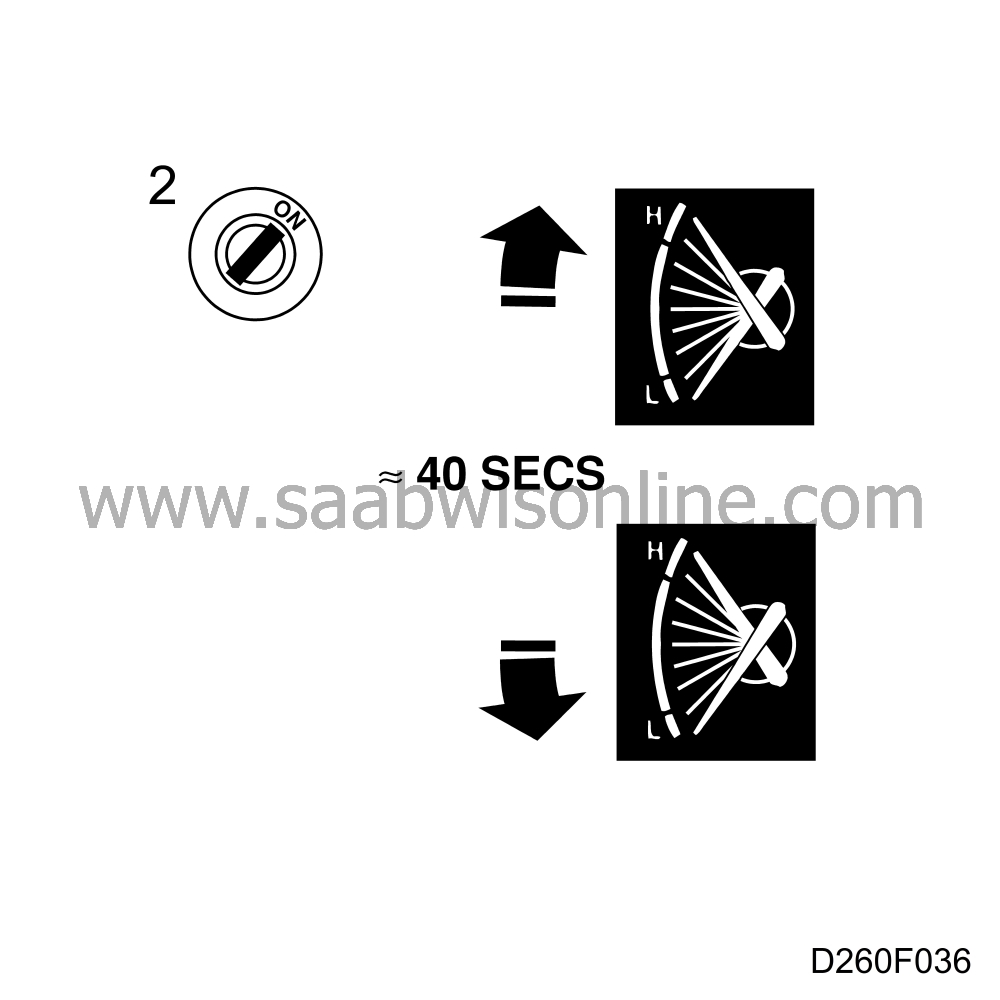
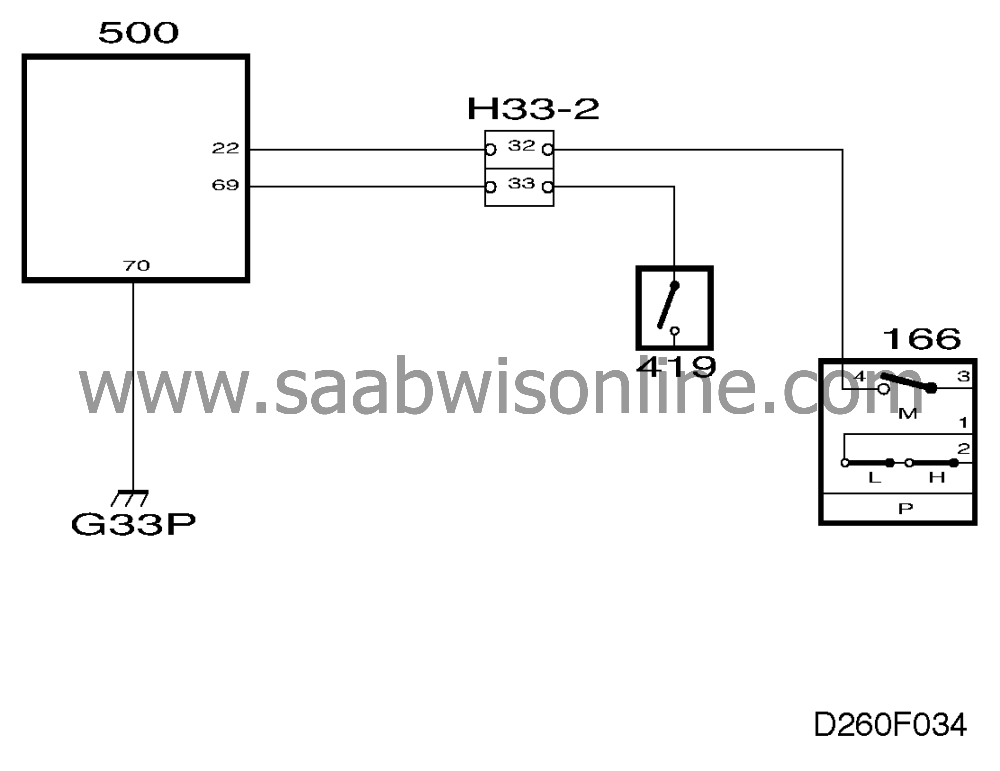
Read the temperature gauge in the car.
|
|
3.
|
Connect a BOB and connect a voltmeter to terminals 70 and 61 for main instrument unit 1 or to terminals 70 and 14 for main instrument unit 2. Then select "ACT.INSTR.FUNCT" followed by "TEMP.GAUGE OUT 1" or "TEMP.GAUGE.OUT 2". The voltage reading obtained should be
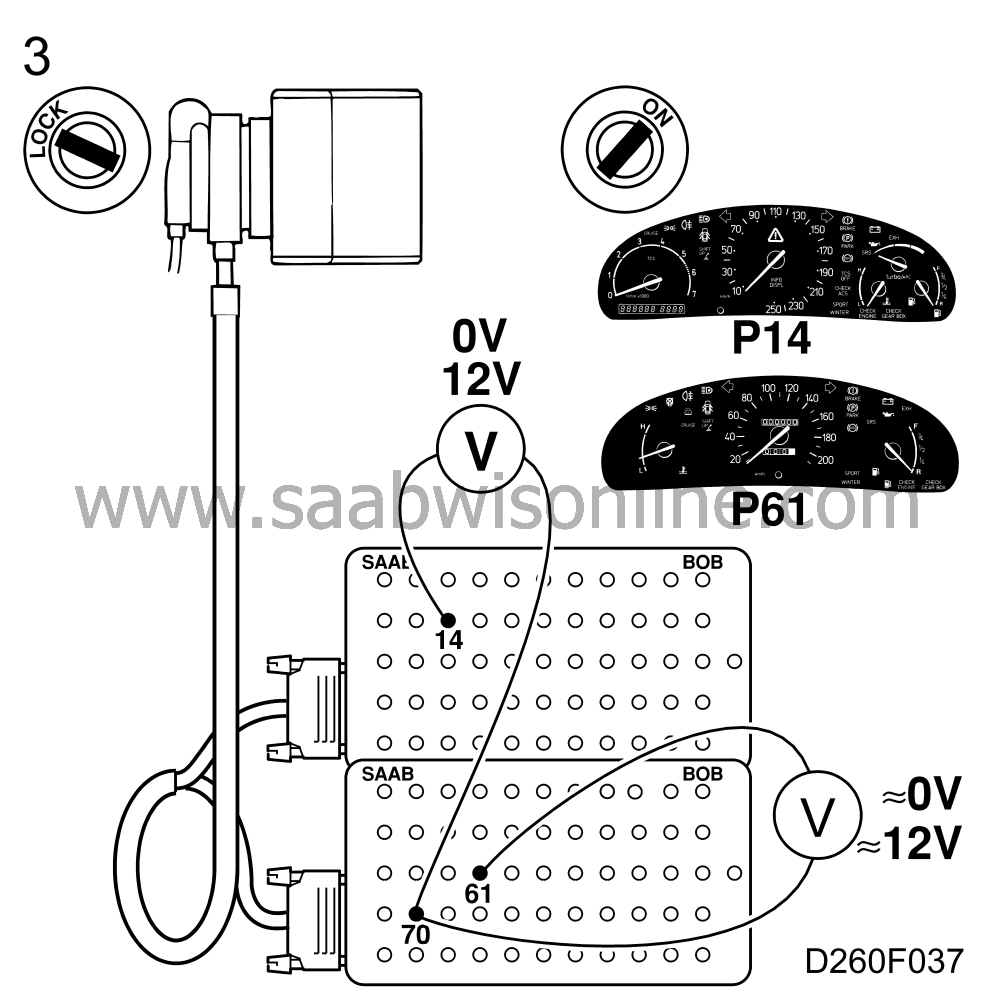
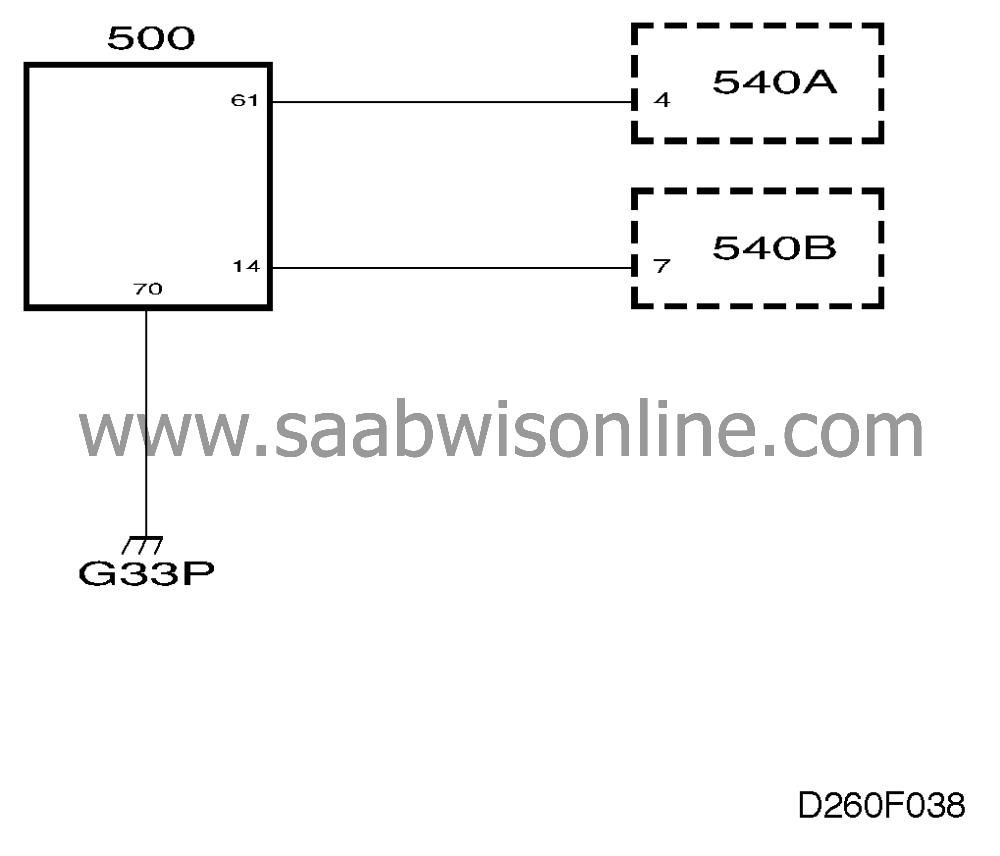
- about 0 V at "ON"
- about 12 V at "OFF"
|
|
4.
|
If the voltage is not correct, check the wiring for open circuits/short circuits as follows:
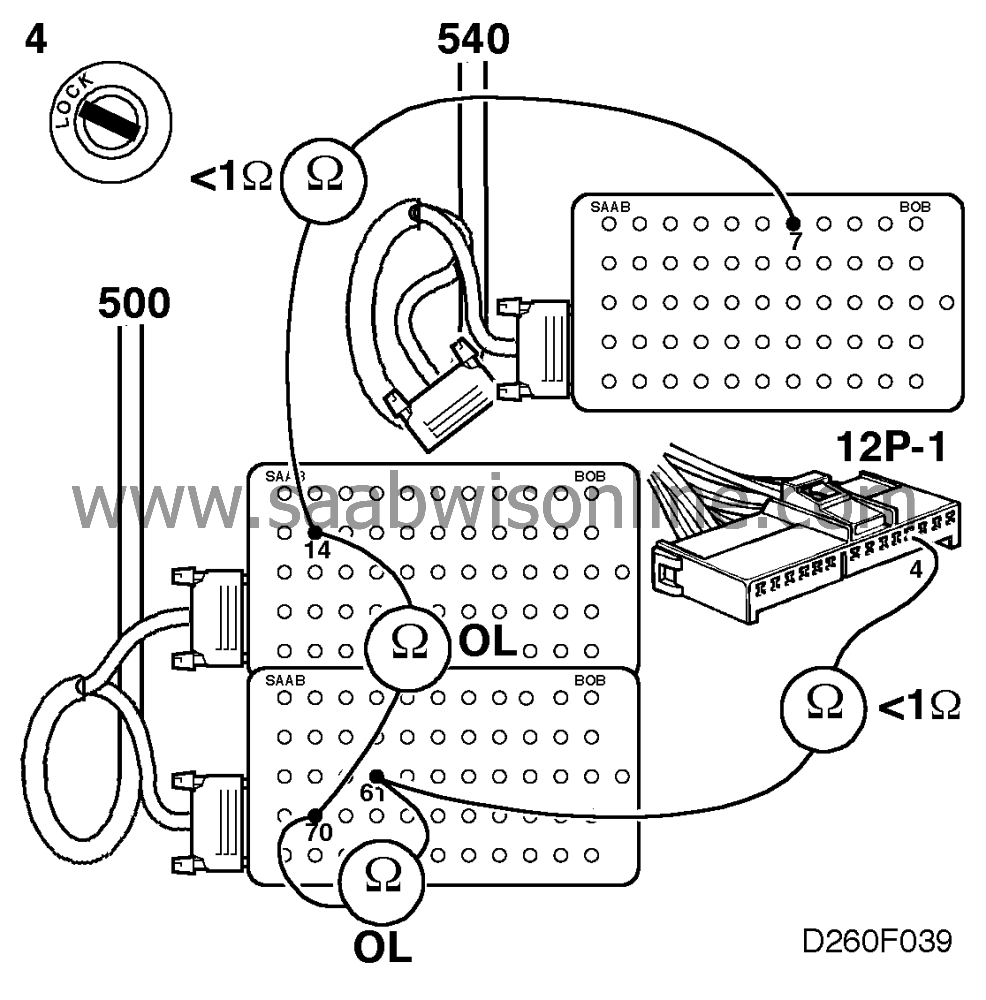
between connection 61 on the ICE and connection 4 on the main instrument (main instrument 1)
between connection 14 on the ICE and connection 7 on the main instrument (main instrument 2).
|
|
5.
|
If the cables are intact, the fault is probably in one of the control modules.
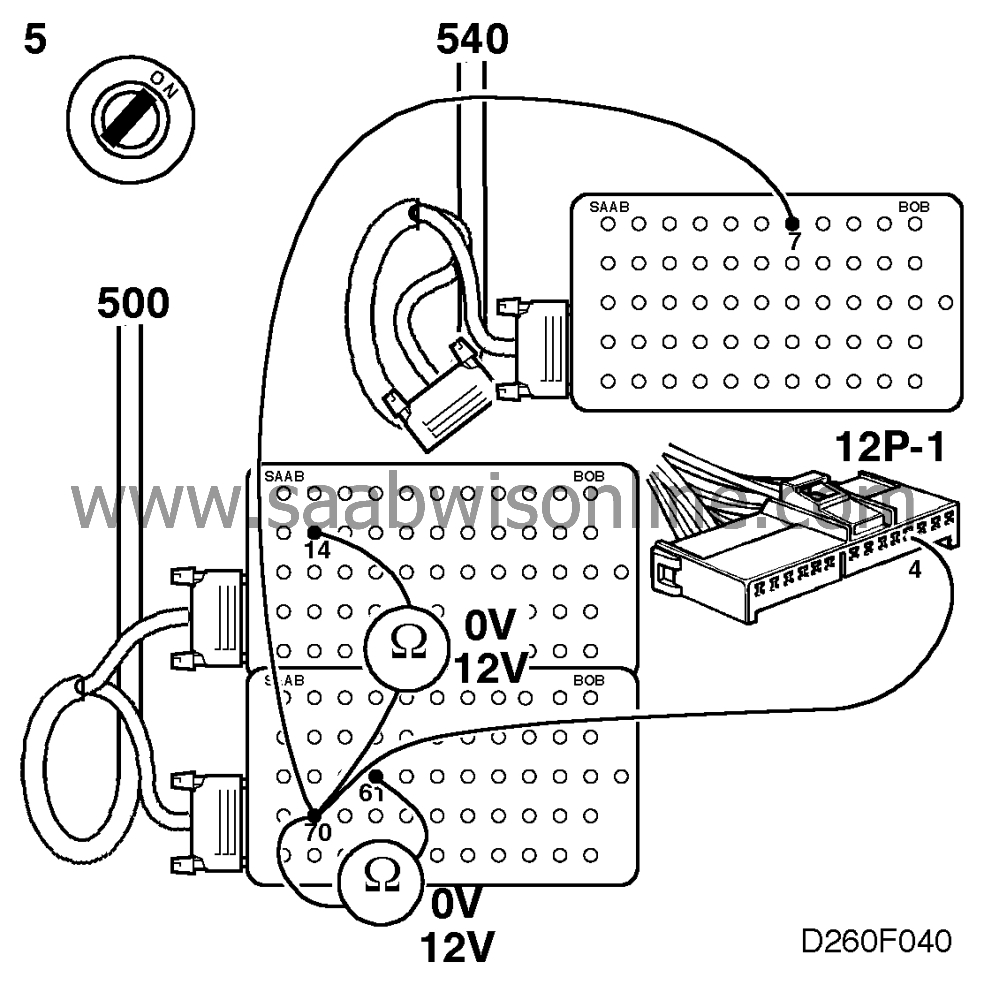
Connect the ICE control module and repeat points 2 and 3 at the same time as connection 4 (main instrument 1) or 7 (main instrument 2) is grounded.
Measured voltage should be 0 V at "ON" and 12 V at "OFF".
If the voltage is correct, the fault is probably in the main instrument, see Service Manual 3.5 for fault-tracing in the main instrument.
If the signal is faulty, continue in Service Manual 3.5 under section ICE.
|
Checking the idling speed increase (only in MOTRONIC 2.10.2)
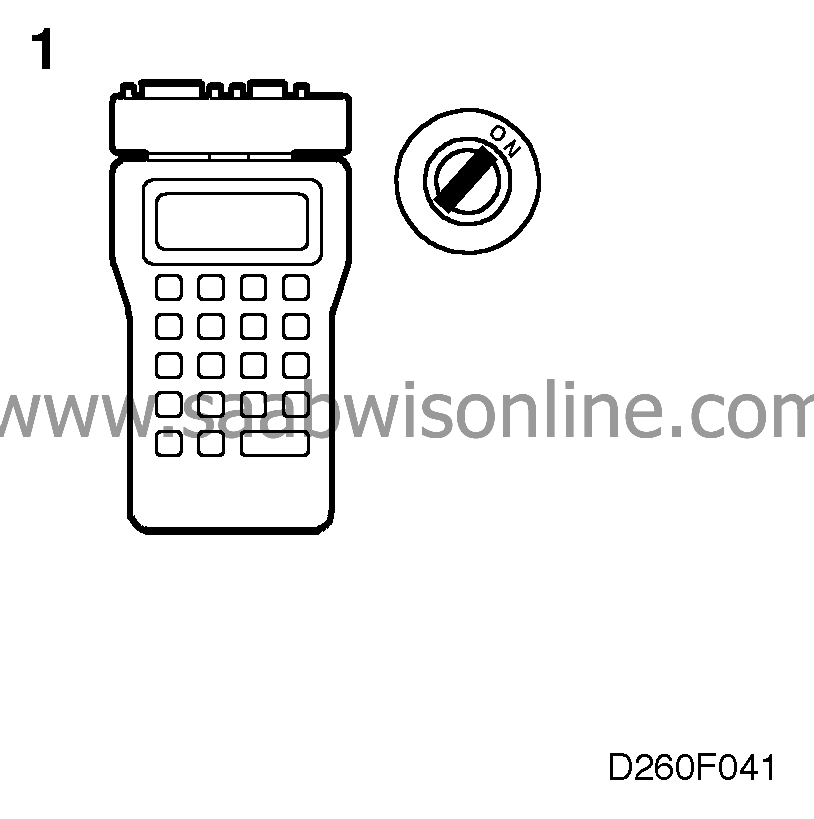
|
1.
|
Connect the diagnostics instrument and select "READ FAULT CODES" in the menu. If any diagnostics trouble codes (fault codes) are present, consult the table of diagnostic trouble codes.
|
|
2.
|
Connect a BOB and measure with a voltmeter between connections 10 and 70. Check the idling speed increase function by selecting "ACT OTHER FUNCT" on the menu followed by "IDLING INCREASE".
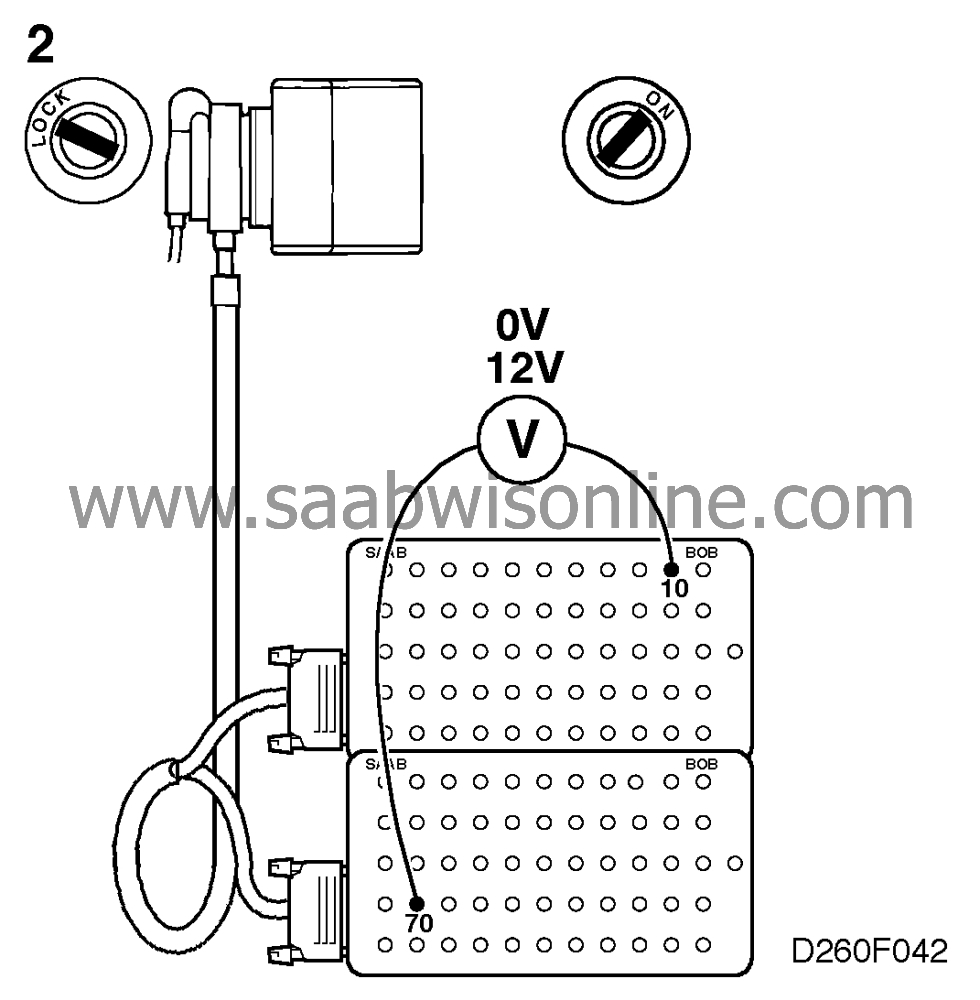

Check on the voltmeter that the voltage falls to about 0 V at "ON" and that it rises to about 12 V at "OFF".
|
|
3.
|
If it does not work, check the wiring between the ICE control module and the engine management system's control module (both control modules disconnected) for open circuits/short circuits.
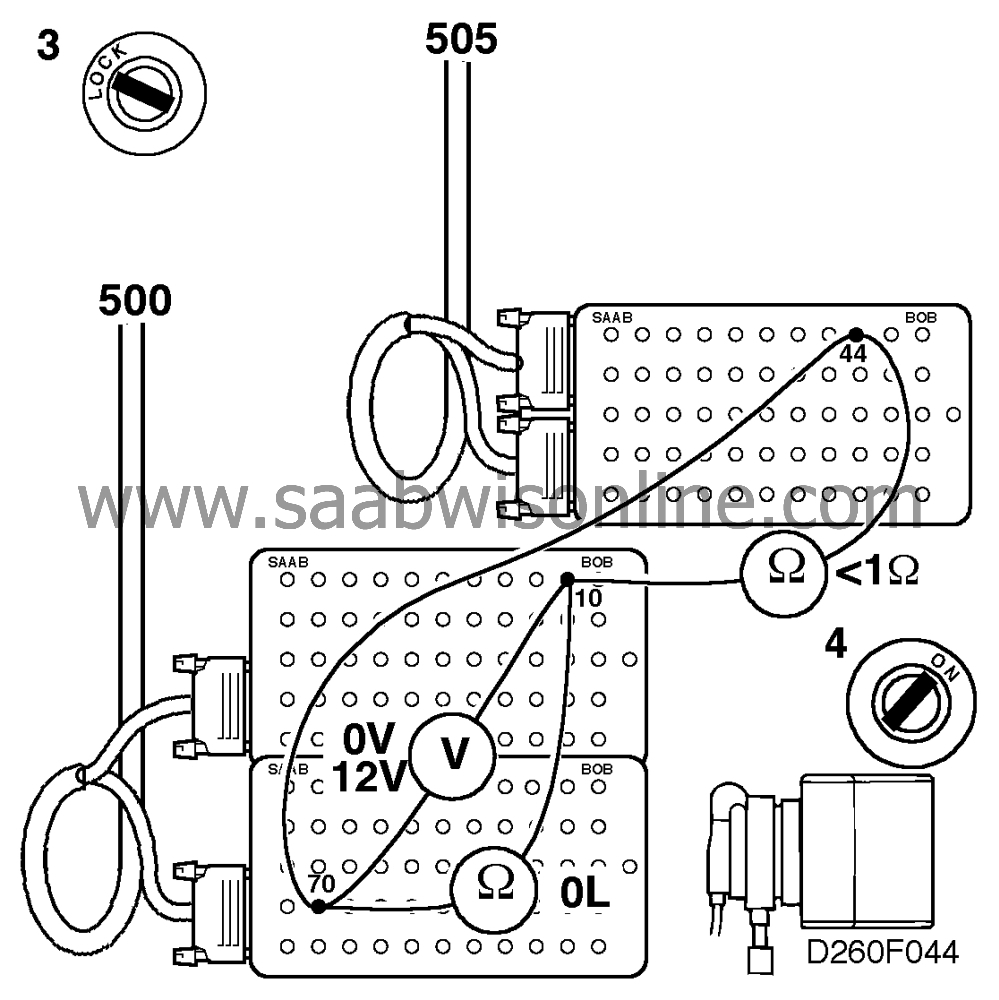
|
|
4.
|
Connect the engine control system's control module and repeat point 2.
The voltage should be 0 V at "ON" and 12 V at "OFF".
If the voltage is correct, the fault is in the engine control system, see Service Manual 2.7.
If the voltage is faulty, see Service Manual 3.5.
|









